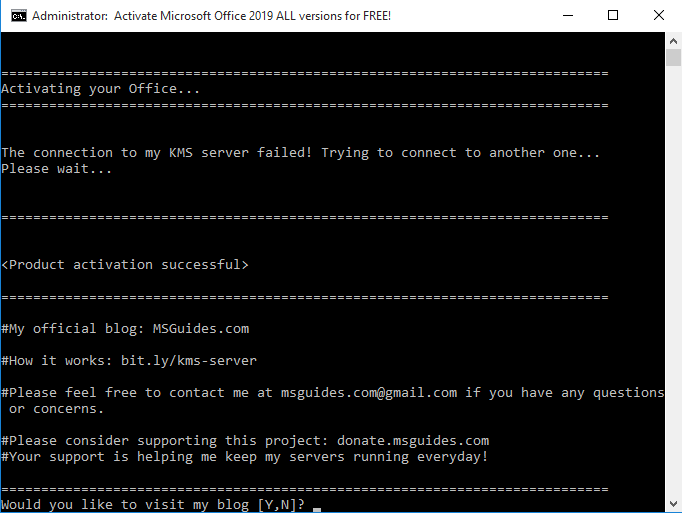How to Activate Microsoft Project without Product Key
Microsoft Project is a project management software product, developed and sold by Microsoft. It is designed to assist a project manager in developing a plan, assigning resources to tasks, tracking progress, managing the budget, and analyzing workloads.
Microsoft Project was the company’s third Microsoft Windows-based application, and within a couple of years of its introduction it became the dominant PC-based project management software.
It is part of the Microsoft Office family but has never been included in any of the Office suites. It is available currently in two editions, Standard and Professional. Microsoft Project’s proprietary file format is .mpp.
I also sell Microsoft Project Professional 2019 key ($35/key). You can redeem MS Project Pro 2019 key via setup.office.com. If you want to buy it, you visit here: https://saleproductkey.com
How to Activate Microsoft Project without Product Key
Step 1: You copy the following code into a new text document.
- For Microsoft Project 2016 you click here
- For Microsoft Project 2019 you click here
Then you create a new text document.
Step 2: Paste the code into the text file. Then save it as a batch file (named “1click.cmd”).
Step 3: Run the batch file as administrator.
Please wait…
Done! You Office has been activated successfully. Please check activation status again.
Check the activation status again.
You can watch this video to know How to Activate Microsoft Project 2016/2019 without Product Key 2019
With this method you can activate
- Microsoft Project 2016
- Microsoft Project 2019
Microsoft Project Features
Project creates budgets based on assignment work and resource rates. As resources are assigned to tasks and assignment work estimated, the program calculates the cost, equal to the work times the rate, which rolls up to the task level and then to any summary tasks and finally to the project level. Resource definitions (people, equipment and materials) can be shared between projects using a shared resource pool. Each resource can have its own calendar, which defines what days and shifts a resource is available. Resource rates are used to calculate resource assignment costs which are rolled up and summarized at the resource level.
Each resource can be assigned to multiple tasks in multiple plans and each task can be assigned multiple resources, and the application schedules task work based on the resource availability as defined in the resource calendars. All resources can be defined in label without limit. Therefore, it cannot determine how many finished products can be produced with a given amount of raw materials. This makes Microsoft Project unsuitable for solving problems of available materials constrained production. Additional software is necessary to manage a complex facility that produces physical goods.
The application creates critical path schedules, and critical chain and event chain methodology third-party add-ons also are available. Schedules can be resource leveled, and chains are visualized in a Gantt chart. Additionally, Microsoft Project can recognize different classes of users. These different classes of users can have differing access levels to projects, views, and other data. Custom objects such as calendars, views, tables, filters, and fields are stored in an enterprise global which is shared by all users.
Read more:







Facebook Comments